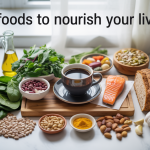Blue tea has caught the attention of health-conscious tea lovers and wellness enthusiasts looking for a colorful alternative to traditional teas. This vibrant butterfly pea flower tea offers unique health benefits while adding a stunning blue hue to your cup.
This guide is perfect for tea newcomers curious about blue tea’s properties, health enthusiasts exploring natural wellness options, and home brewers wanting to master preparation techniques.
We’ll explore the science-backed health benefits that make blue tea stand out from other herbal teas. You’ll also learn about potential safety considerations to keep in mind before adding blue tea to your routine. Finally, we’ll walk through simple brewing methods that help you create the perfect cup every time.
What is Blue Tea and Its Natural Origins
Understanding Butterfly Pea Flower as the Source
Blue tea gets its vibrant color from the butterfly pea flower, scientifically known as Clitoria ternatea. This stunning flower grows on a climbing plant native to Southeast Asia, producing deep blue petals that look almost too beautiful to be real. The flower earned its common name from its resemblance to a butterfly’s wings when viewed from the side.
The magic happens in the flower’s petals, which contain high concentrations of anthocyanins – the same compounds that give blueberries and purple cabbage their rich colors. These water-soluble pigments create the tea’s signature electric blue hue when steeped in hot water. Unlike many herbal teas that rely on leaves or roots, butterfly pea tea uses only the delicate flower petals, making each cup a celebration of nature’s artistry.
Harvesting typically occurs in the early morning when the flowers are at their peak potency. The petals are carefully dried to preserve their color and beneficial compounds, creating the deep blue dried flowers you’ll find in specialty tea shops.
Traditional Uses in Southeast Asian Cultures
Butterfly pea flowers have been woven into Southeast Asian cultures for centuries, far beyond their role as a beverage. In Thailand, the flowers are called “anchan” and have been used in traditional cooking to create naturally blue rice dishes and desserts. Thai cooks have long appreciated how the flower’s natural coloring eliminates the need for artificial dyes.
Traditional medicine practitioners across Malaysia, Thailand, and Indonesia have used butterfly pea flowers for various wellness purposes. Ancient healers believed the flowers could support memory and brain function, leading to their use in folk remedies passed down through generations. The flowers were often prepared as teas or mixed into herbal concoctions during religious ceremonies and healing rituals.
In Ayurvedic medicine, butterfly pea flowers are considered cooling and are traditionally used to balance the body’s energies. The practice of brewing these flowers into tea was seen as both nourishing and spiritually cleansing, making it a staple in many Southeast Asian households during times of stress or illness.
Natural Color-Changing Properties Explained
The most fascinating aspect of blue tea is its dramatic color-changing ability when acid is introduced. Add a few drops of lemon juice, and watch the deep blue instantly transform into vibrant purple or pink. This isn’t magic – it’s pure chemistry at work.
The anthocyanin compounds in butterfly pea flowers are pH indicators, meaning they change color based on acidity levels. In neutral or alkaline conditions, the anthocyanins display their natural blue color. When acid is added, the molecular structure shifts, reflecting different wavelengths of light and creating purple, pink, or even red hues depending on the acid concentration.
| pH Level | Color Result |
|---|---|
| 7+ (Alkaline) | Deep Blue |
| 6-7 (Neutral) | Bright Blue |
| 4-6 (Mild Acid) | Purple |
| 2-4 (Strong Acid) | Pink to Red |
This natural color-changing property makes butterfly pea tea popular for Instagram-worthy drinks and cocktails. Bartenders and home enthusiasts love experimenting with different citrus fruits – lime creates purple tones, while stronger acids like vinegar can push the color toward deep pink. The transformation happens instantly, creating an entertaining experience that never gets old.
Proven Health Benefits of Blue Tea
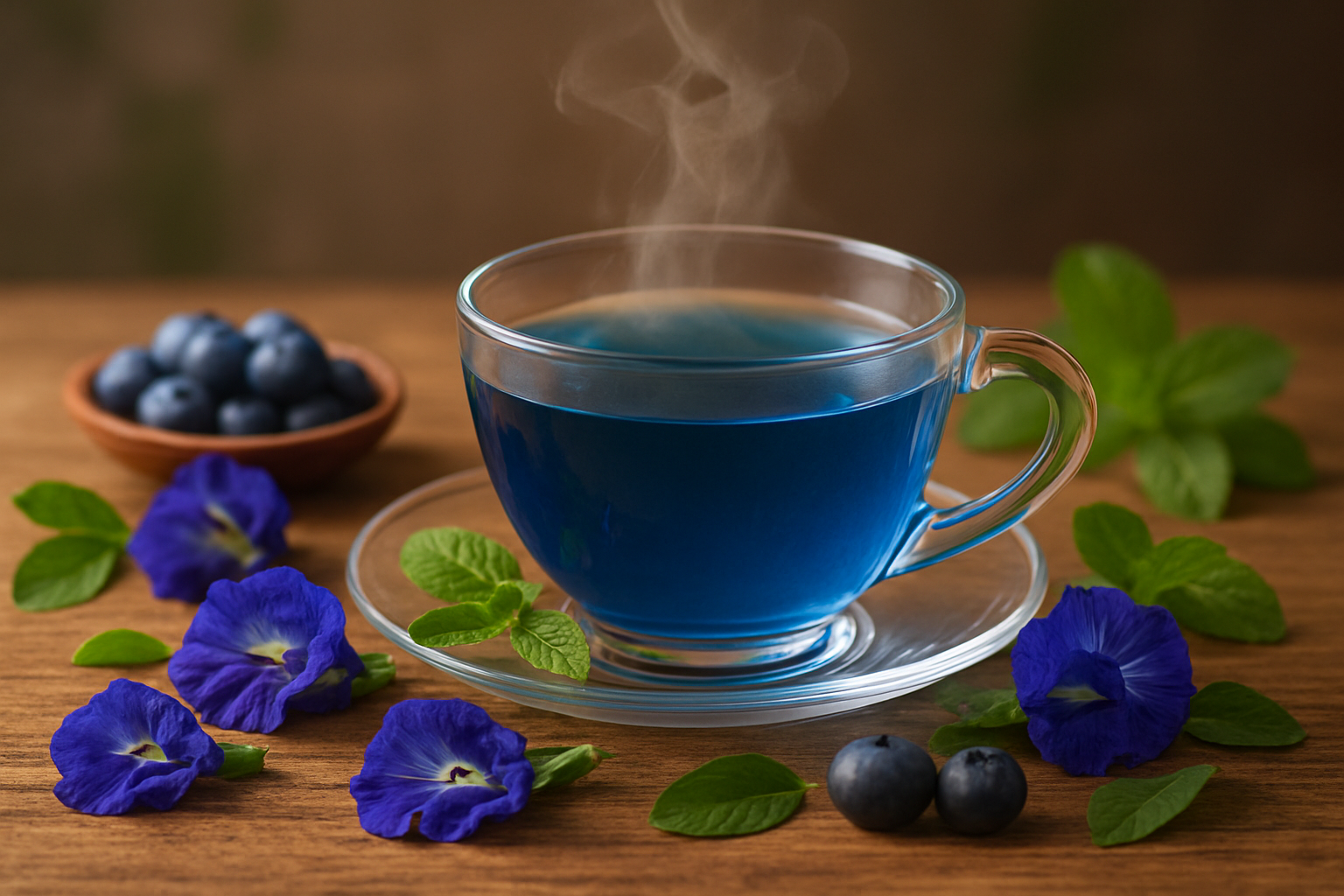
Powerful Antioxidant Protection for Your Body
Blue tea delivers an impressive arsenal of antioxidants, primarily from anthocyanins—the same compounds that give blueberries and purple cabbage their vibrant colors. These natural defenders work tirelessly to neutralize free radicals that damage your cells and accelerate aging. Research shows that butterfly pea flowers contain proanthocyanidin, a particularly potent antioxidant that’s three times more effective than vitamin C at protecting your body from oxidative stress.
Your immune system gets a significant boost from these antioxidants, helping ward off infections and chronic diseases. The high concentration of flavonoids in blue tea supports cellular repair and regeneration, potentially reducing your risk of heart disease and certain cancers. Studies indicate that people who regularly consume anthocyanin-rich foods show improved overall health markers and enhanced longevity.
Enhanced Brain Function and Memory Support
The cognitive benefits of blue tea stem from its unique ability to cross the blood-brain barrier and protect neural tissue. Acetylcholine, a crucial neurotransmitter for memory and learning, gets preserved and enhanced by compounds found in butterfly pea flowers. Regular consumption may help improve focus, concentration, and information retention.
Brain fog becomes less of an issue as blue tea’s bioactive compounds support healthy blood flow to the brain. The neuroprotective properties show particular promise for aging adults, with preliminary studies suggesting potential benefits for preventing cognitive decline. Mental clarity improves as the antioxidants reduce inflammation in brain tissue, creating an optimal environment for neural communication.
Blood Sugar Regulation and Diabetes Management
Blue tea naturally helps stabilize blood glucose levels through several mechanisms. The proanthocyanidins slow down carbohydrate absorption in your intestines, preventing the sharp spikes in blood sugar that typically follow meals. This gentle regulation makes it particularly valuable for people managing type 2 diabetes or prediabetes.
Your body’s insulin sensitivity may improve with regular blue tea consumption. The anthocyanins enhance glucose uptake by muscle cells while reducing glucose production in the liver. Clinical observations show that drinking blue tea before meals can reduce post-meal blood sugar spikes by up to 15%. This natural approach to glucose management offers a pleasant alternative to restrictive dietary changes.
Anti-Inflammatory Effects for Better Health
Chronic inflammation underlies many modern health problems, from arthritis to cardiovascular disease. Blue tea’s anti-inflammatory compounds target multiple inflammatory pathways, providing comprehensive protection against inflammatory damage. The cyclotide proteins unique to butterfly pea flowers demonstrate remarkable anti-inflammatory activity in laboratory studies.
Joint pain and stiffness often improve with regular blue tea consumption. The natural compounds reduce inflammatory markers like C-reactive protein and interleukin-6, which are associated with various chronic conditions. Athletes and active individuals report faster recovery times and reduced muscle soreness when incorporating blue tea into their routine. The gentle yet effective anti-inflammatory action makes it suitable for long-term use without the side effects associated with pharmaceutical anti-inflammatories.
Skin and Hair Health Improvements
Your skin’s appearance benefits significantly from blue tea’s collagen-supporting properties. The antioxidants protect against UV damage and environmental pollutants that cause premature aging. Vitamin C and flavonoids work together to maintain skin elasticity and reduce the appearance of fine lines and wrinkles.
Hair growth and strength improve as the nutrients reach your scalp through improved circulation. The anthocyanins strengthen hair follicles and may help prevent premature graying by protecting melanin-producing cells. Many people notice shinier, more resilient hair within weeks of starting regular blue tea consumption. The anti-inflammatory effects also help soothe scalp conditions like dandruff and irritation, creating healthier conditions for hair growth.
Potential Risks and Safety Considerations
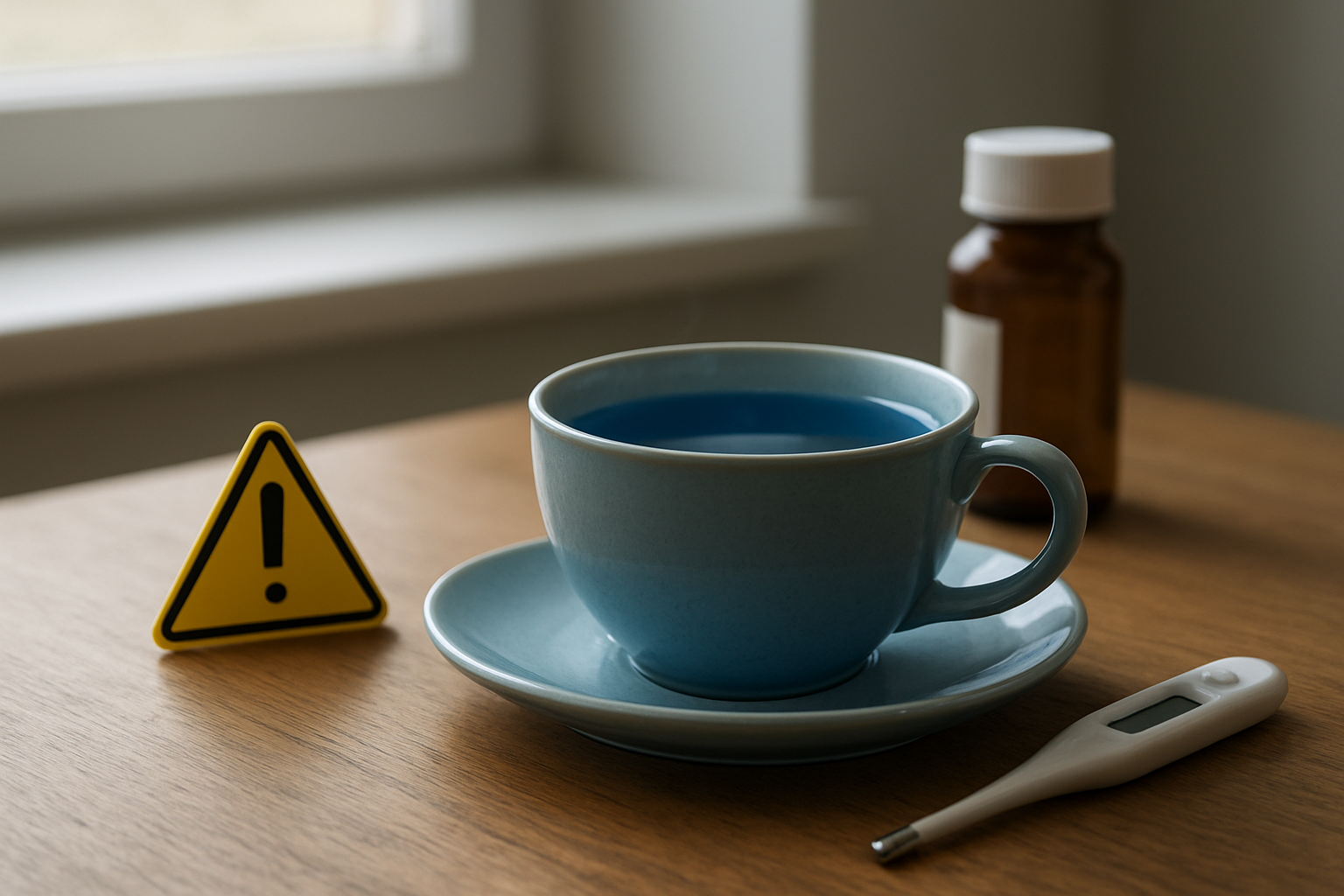
Possible Allergic Reactions and Sensitivities
Blue tea can trigger allergic reactions in some people, especially those sensitive to flowers or plant-based products. Common symptoms include skin rashes, itching, hives, or digestive upset like nausea and stomach cramping. People with existing allergies to hibiscus, chamomile, or other herbal teas should exercise extra caution when trying blue tea for the first time.
If you have a history of food allergies or sensitivities, start with a very small amount – just a few sips – and wait several hours to monitor your body’s response. Severe reactions, though rare, can include difficulty breathing, swelling of the face or throat, or rapid heartbeat. Anyone experiencing these symptoms should seek immediate medical attention.
Pregnant and breastfeeding women should consult their healthcare provider before adding blue tea to their routine, as there’s limited research on its effects during these periods.
Blood Clotting Concerns for Certain Individuals
Blue tea contains compounds that may interfere with blood clotting mechanisms, which creates potential complications for people on blood-thinning medications like warfarin, aspirin, or clopidogrel. The anthocyanins in butterfly pea flowers can enhance the effects of these medications, potentially increasing bleeding risk.
People scheduled for surgery should stop drinking blue tea at least two weeks beforehand, as it might affect blood clotting during and after the procedure. Those with bleeding disorders like hemophilia or von Willebrand disease should avoid blue tea entirely unless cleared by their doctor.
Regular blood work monitoring becomes even more important for people who drink blue tea while taking anticoagulant medications. Any unusual bruising, prolonged bleeding from minor cuts, or blood in urine or stool warrants immediate medical consultation.
Safe Dosage Guidelines and Consumption Limits
Most health experts recommend limiting blue tea consumption to 1-2 cups daily. This amount provides beneficial antioxidants without overwhelming your system or increasing risk of adverse effects. Each cup should contain roughly 1-2 teaspoons of dried butterfly pea flowers steeped for 5-10 minutes.
Children under 12 should avoid blue tea completely, while teenagers can have small amounts – no more than half a cup daily – under parental supervision. Elderly individuals or those with compromised immune systems should start with even smaller portions and gradually increase if no negative reactions occur.
People taking medications should space their blue tea consumption at least 2 hours away from their medication schedule to prevent potential interactions. Keep a food diary when first introducing blue tea to track any changes in how you feel or sleep patterns.
| Group | Daily Limit | Special Considerations |
|---|---|---|
| Healthy Adults | 1-2 cups | Monitor for initial reactions |
| Teenagers | 0.5 cups | Parental supervision recommended |
| Elderly | 0.5-1 cup | Start with smaller amounts |
| Medication Users | 1 cup max | Space 2 hours from medications |
Simple Blue Tea Preparation Methods
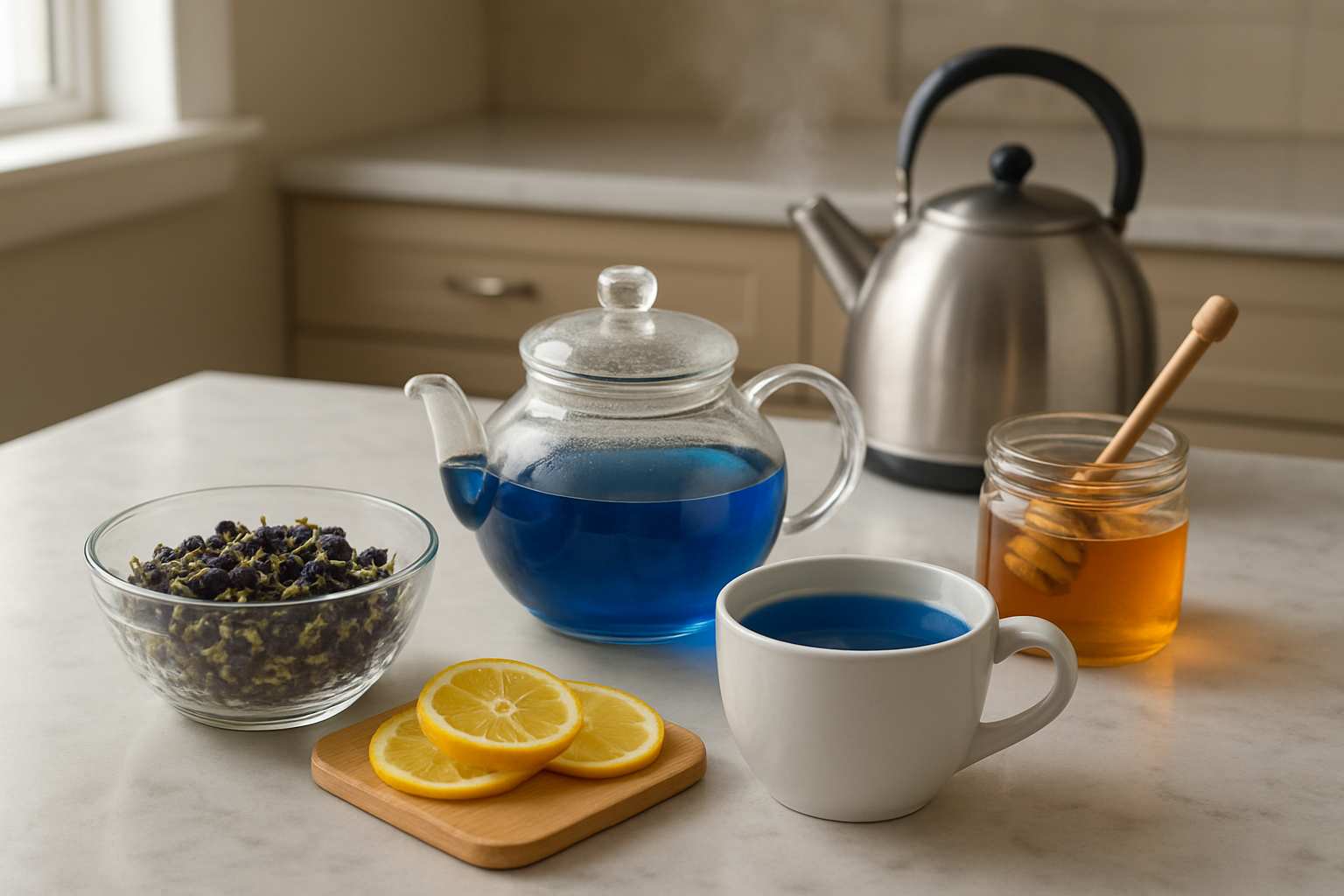
Hot Brewing Technique for Maximum Flavor
The traditional hot brewing method brings out blue tea’s full flavor profile and deepest color intensity. Start by heating water to 195-205°F – just below boiling point. Excessive heat can damage the delicate anthocyanins responsible for the tea’s signature blue hue and diminish its antioxidant properties.
Use 1-2 teaspoons of dried butterfly pea flowers per 8 ounces of water. Pour the hot water over the flowers and steep for 5-7 minutes. The water will gradually transform from clear to a stunning deep blue. For stronger flavor and color, extend steeping time to 10 minutes. Strain the flowers before serving to prevent over-extraction and bitterness.
Optimal brewing ratios:
- Light brew: 1 tsp per cup, 3-5 minutes
- Medium brew: 1.5 tsp per cup, 5-7 minutes
- Strong brew: 2 tsp per cup, 7-10 minutes
Cold Brewing Process for Refreshing Drinks
Cold brewing creates a smoother, less astringent blue tea perfect for hot summer days. This gentle extraction method preserves more delicate compounds while producing a naturally sweet flavor profile.
Combine 1/4 cup dried butterfly pea flowers with 4 cups cold water in a glass container. Refrigerate for 6-12 hours – longer steeping creates deeper color and stronger flavor. The slow extraction process results in a brilliant azure liquid with remarkable clarity.
Strain through a fine mesh or coffee filter. Cold-brewed blue tea stays fresh in the refrigerator for up to 5 days. This concentrated base can be diluted with additional cold water or ice to preferred strength.
Adding Natural Flavor Enhancers and Sweeteners
Blue tea’s mild, earthy flavor pairs beautifully with various natural enhancers. Honey and agave nectar complement the tea’s subtle notes without overpowering them. Start with 1 teaspoon per cup and adjust to taste.
Fresh herbs create exciting flavor combinations:
- Mint leaves: Add cooling freshness
- Lemon balm: Provides citrusy brightness
- Ginger slices: Introduces warming spice
- Lavender buds: Creates floral complexity
Fruit additions work wonderfully too. Fresh berries, orange slices, or cucumber ribbons infuse natural sweetness and additional nutrients. Add these ingredients during the last 2-3 minutes of hot brewing or directly to cold-brewed tea.
Creating Color-Changing Tea Cocktails
The magic of blue tea lies in its pH-sensitive pigments that create spectacular color transformations. Adding acidic ingredients like lemon juice turns the blue liquid purple, then pink as acidity increases.
Basic Color-Changing Recipe:
- Brew strong blue tea (hot or cold)
- Pour into clear glasses to showcase color
- Add lemon juice drop by drop while stirring
- Watch the transformation from blue to purple to pink
Create layered effects by adding citrus slowly along one side of the glass. Lime juice produces similar results, while orange juice creates more subtle shifts. For party presentations, provide small bottles of lemon juice so guests can create their own color magic.
These visual transformations make blue tea an incredible conversation starter and Instagram-worthy beverage that’s as entertaining as it is healthy.
Maximizing Your Blue Tea Experience
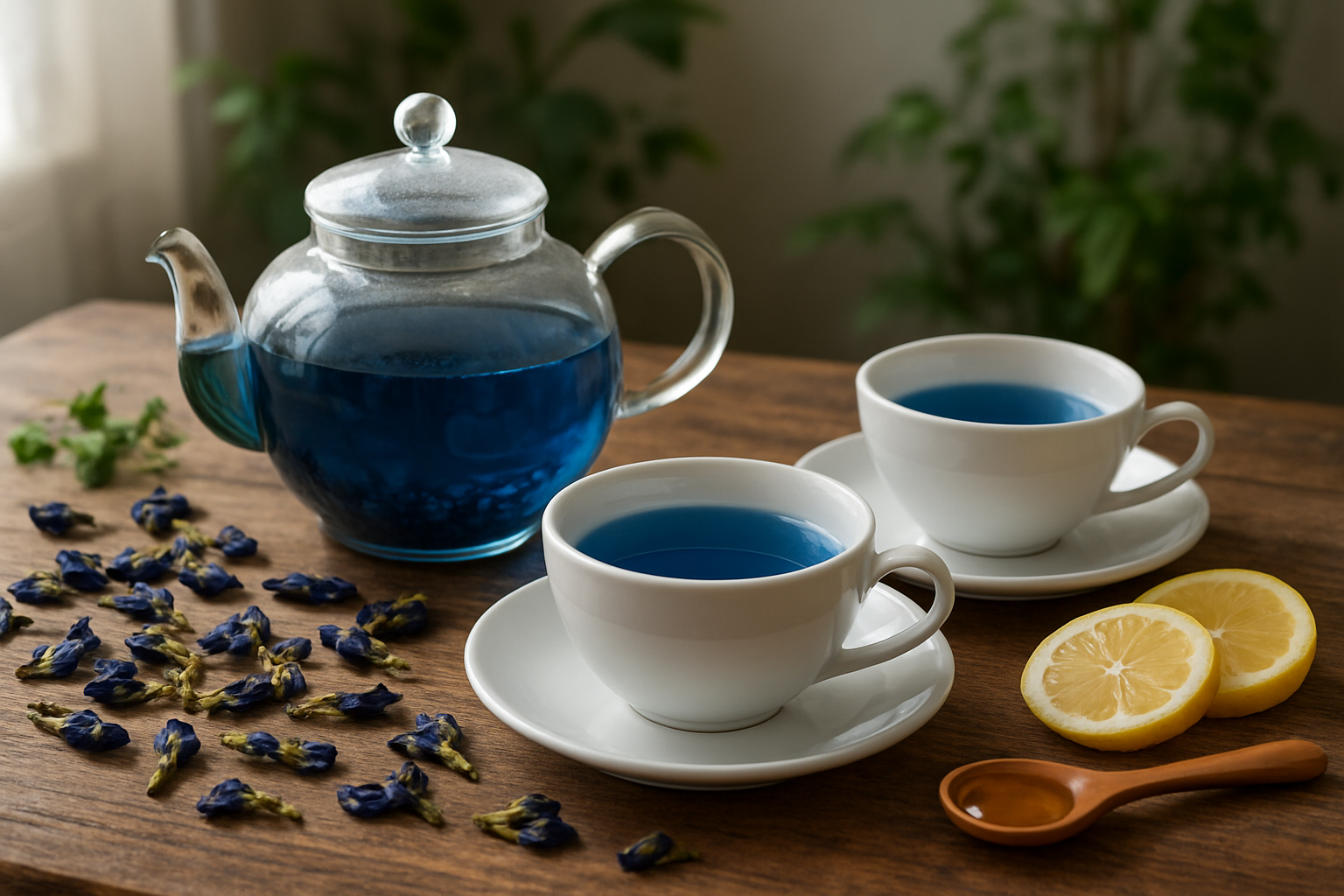
Best Times to Drink for Optimal Benefits
Your body’s natural rhythms play a huge role in how effectively you absorb and process the nutrients in blue tea. Drinking it at strategic times can amplify its health benefits and help you feel your absolute best.
Morning consumption works particularly well for those seeking cognitive enhancement. The natural antioxidants in butterfly pea flowers support brain function without the jittery side effects of caffeine. This makes it perfect for starting your day with clear focus and sustained energy.
Afternoon blue tea sessions offer excellent stress relief benefits. The anthocyanins that give blue tea its stunning color have natural calming properties that help counteract midday tension. Sipping this vibrant brew between 2-4 PM can help reset your mental state and boost afternoon productivity.
Evening consumption deserves special attention. Unlike caffeinated beverages, blue tea actually promotes relaxation and better sleep quality. The natural compounds support your body’s production of melatonin, making it an ideal bedtime ritual. Drink it 30-60 minutes before sleep for maximum effectiveness.
Pairing Blue Tea with Healthy Foods
Smart food pairings can dramatically enhance blue tea’s nutritional impact and create more satisfying experiences. The key lies in understanding which nutrients work synergistically with the tea’s natural compounds.
Citrus fruits create magical transformations when paired with blue tea. Adding lemon or lime juice not only shifts the color from blue to purple but also increases vitamin C absorption. This combination creates a powerful antioxidant boost that supports immune function and collagen production.
Healthy fats enhance the absorption of fat-soluble vitamins present in blue tea. Pair your cup with:
- Nuts and seeds (especially walnuts and chia seeds)
- Avocado slices on whole grain toast
- Greek yogurt with berries
- Dark chocolate (85% cacao or higher)
Protein-rich snacks complement blue tea’s metabolism-supporting properties. Light options include:
- Hard-boiled eggs
- Cottage cheese with fresh herbs
- Hummus with vegetable sticks
- Lean turkey or chicken slices
Avoid dairy products immediately before or after drinking blue tea, as calcium can interfere with antioxidant absorption. Wait at least 30 minutes between consuming dairy and your blue tea.
Storage Tips to Maintain Freshness and Potency
Proper storage makes the difference between vibrant, potent blue tea and a lackluster brew that’s lost its beneficial compounds. Butterfly pea flowers are surprisingly delicate and require specific conditions to maintain their deep blue color and nutritional value.
Dried Flower Storage:
Keep dried butterfly pea flowers in airtight glass containers away from direct sunlight. Mason jars work perfectly and allow you to monitor the flowers’ color intensity. Store in a cool, dry place like a pantry shelf – never in the refrigerator where moisture can cause mold.
Temperature control matters more than most people realize. Excessive heat breaks down the anthocyanins responsible for both color and health benefits. Ideal storage temperature ranges between 60-70°F (15-21°C).
Prepared Tea Storage:
Brewed blue tea stays fresh in the refrigerator for up to 3 days when stored in glass containers. Plastic containers can leach chemicals and affect taste. Always cover tightly to prevent absorption of refrigerator odors.
For longer storage, freeze blue tea in ice cube trays. These colorful cubes make stunning additions to water, smoothies, or cocktails while preserving the antioxidant content for up to 3 months.
Quality Indicators:
Fresh butterfly pea flowers should maintain their deep blue color. Faded or brownish flowers have lost potency. The dried flowers should feel crisp and break easily when pressed. Any signs of moisture, clumping, or musty odors indicate spoilage.
Label your containers with purchase or preparation dates to track freshness. Replace dried flowers every 12-18 months for optimal potency, even with perfect storage conditions.
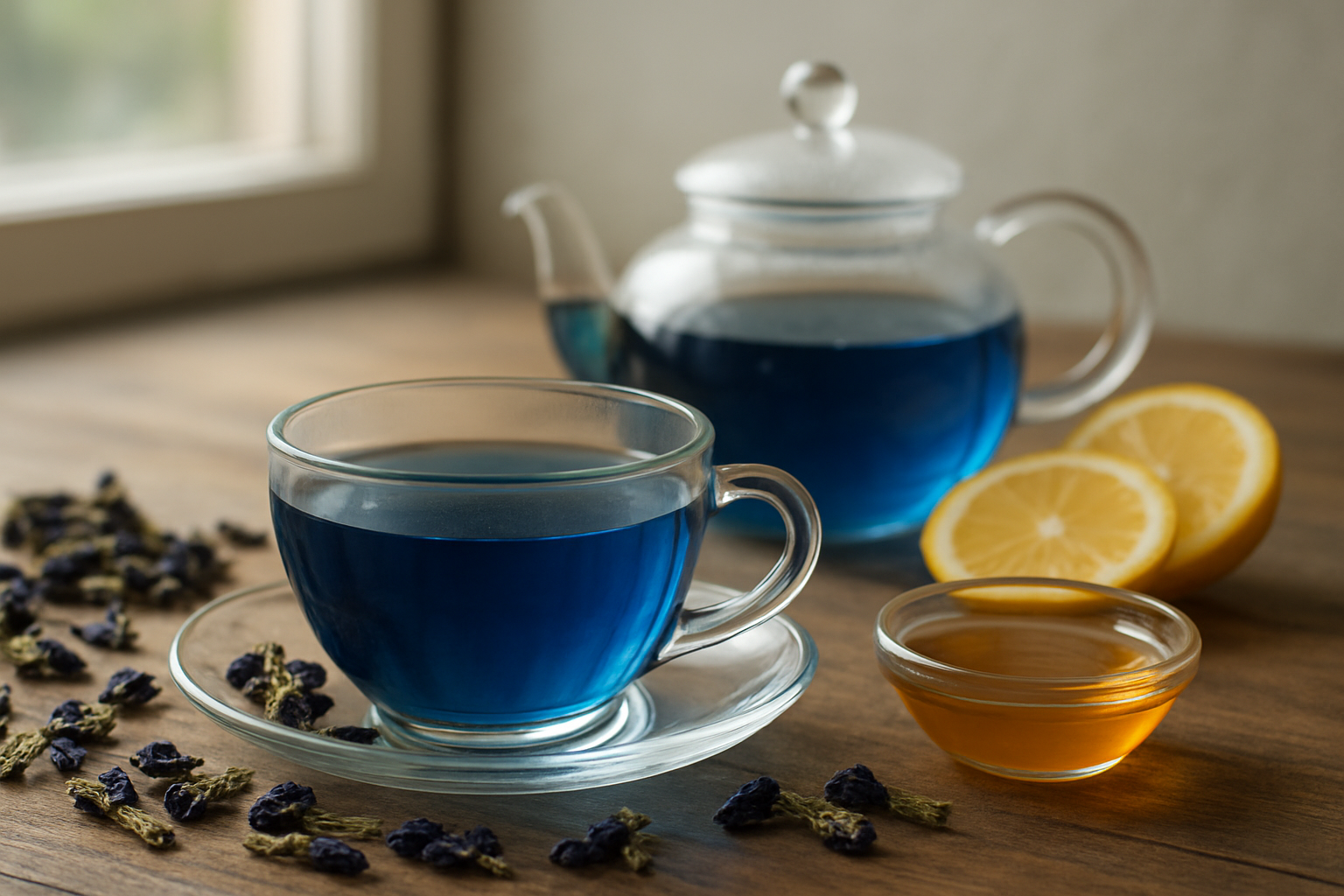
Blue tea offers a unique combination of antioxidant power and natural beauty that sets it apart from traditional teas. From supporting brain health and reducing inflammation to promoting healthy skin and aiding weight management, this vibrant drink delivers impressive health benefits when enjoyed as part of a balanced lifestyle. The preparation is refreshingly simple – just steep the dried butterfly pea flowers in hot water and watch the magic happen as your cup transforms into a stunning blue beverage.
While blue tea is generally safe for most people, remember to start slowly if you’re new to herbal teas and consult your healthcare provider if you’re pregnant, nursing, or taking medications. The real joy comes from experimenting with different brewing times, temperatures, and natural additions like lemon or honey to find your perfect cup. Ready to add some color and wellness to your daily routine? Pick up some butterfly pea flowers and start brewing your way to better health – your taste buds and body will thank you for this delightful discovery.


